
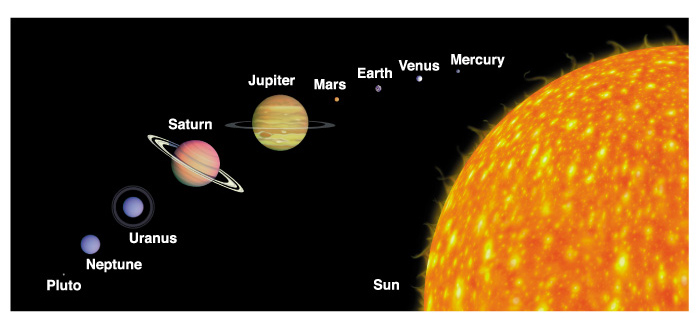
Wednesday, June 12th 2002. Reading: Cosmic Perspective Chapters 1, 8, & 12


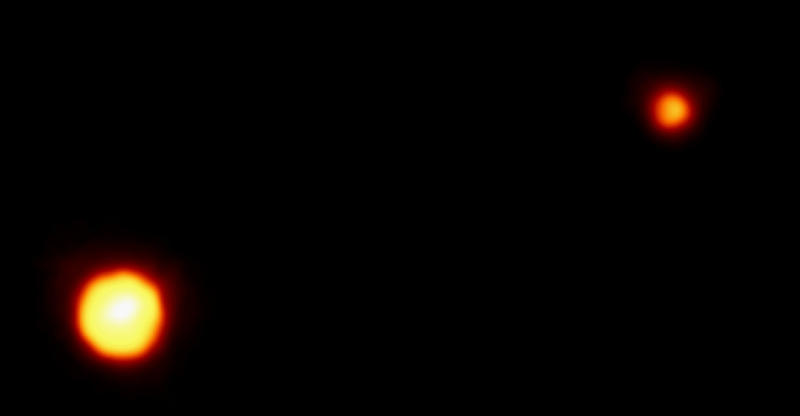
| Planet | dSun (AU) | Orbital P (yr) | Radius (R | Mass (M | Density (g/cm3) | Rotation P (days) | Axis tilt | moons | symbol |
| Pluto | 39.5 | 249 | 0.2 | 0.0025 | 2.1 | 6.4 | 120° | 1 |
Planet #9, 1 moon
Discovered in 1930 (C. Tombaugh), and its moon, Charon, was not discovered until 1978 (J. Christy)
Sometimes Pluto is closer to the Sun than Neptune because of its highly elliptical orbit (e = 0.25). It was closer 1979-1999, it's currently back to being the furthest from the Sun.
The orbit is also inclined by 17° with respect to the ecliptic plane. Very large.
Despite its being an outer planet, Pluto is completely unlike the jovian worlds. It's actually very similar in composition to Triton (Neptune's largest moon).
Charon is has a radius = 0.1R![]() = 0.5R
= 0.5R![]() . It's really like a "double planet"! The orbital period is 6 days (tidally locked).
. It's really like a "double planet"! The orbital period is 6 days (tidally locked).
Every 250 years there is a 5-year period where Pluto and Charon eclipse eachother as seen from Earth. This allowed astronomers on Earth to determine the physical sizes and densities of the system.
The rotation axis is "on it's side" like Uranus.
Pluto has a thin, methane atmosphere. Able to keep it because it is so cold there (40 K).
2 thoughts about Pluto:
(1) A former moon of Neptune that was stripped away
(2) The largest of the Kuiper belt objects
Kuiper Belt The Kuiper Belt is a recently discovered debris field that lies just beyond the orbit of Neptune. So far there have been over 60 small icy worlds discovered here and it is estimated that there may be as many as over 30,000 such icy worldlets in a flattened belt extending out to as far as 1000 AU. This region is very much like the inner asteroid belt, but because of its distance from the Sun these big rocks are able to keep water ice frozen on their surface.
The Kuiper Belt is a recently discovered debris field that lies just beyond the orbit of Neptune. So far there have been over 60 small icy worlds discovered here and it is estimated that there may be as many as over 30,000 such icy worldlets in a flattened belt extending out to as far as 1000 AU. This region is very much like the inner asteroid belt, but because of its distance from the Sun these big rocks are able to keep water ice frozen on their surface.
There has been a controversy in the Astronomical community on whether or not to classify Pluto as a planet or big Kuiper belt object. |
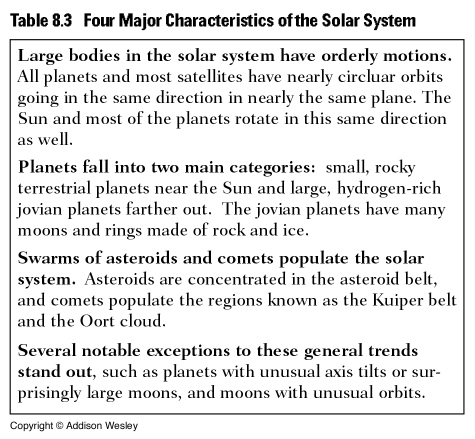
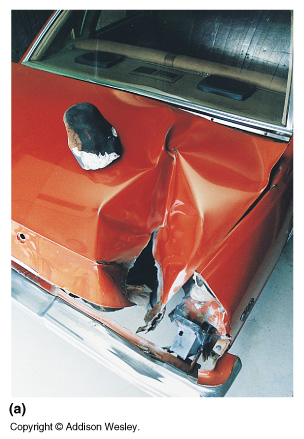 Meteorites: are debris which actually touch down on the Earth's surface
Meteorites: are debris which actually touch down on the Earth's surface
Meteroids: chunks floating through interplanetary space, not in the asteroid belt. Most are small (< 10 m). Most probably come from the asteroid belt; produced by collisions.
When they enter Earth's atmosphere (< 100 km), they burn due to friction. They are coming in with very high velocity and hence have much kinetic energy which is converted into heat and light during the burn. Shooting Star
When they are found on the surface they can be studied to give clues as to the composition of the early Solar System and its age.
Age = 4.6 Billion years
Some meteorites seem to come from the Moon, and Mars. Some meteorites have carbon-rich molecules, like amino acids: life precursors.
Meteor Showers occur when Earth passes through the debris field that a comet leaves behind after passing through the inner Solar System. Most re-occur each year since the debris field is in orbit around the Sun as well.
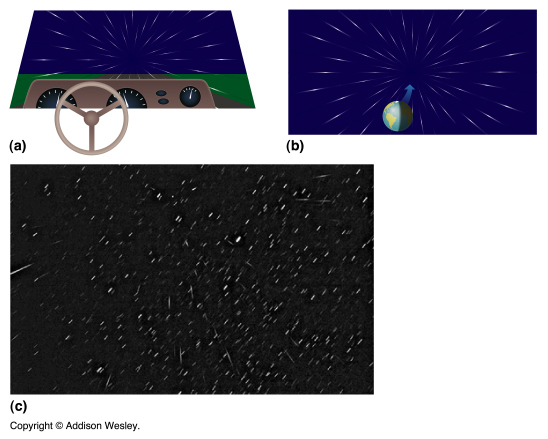
Some meteors are bigger and when they enter the atmosphere they burn very brightly and leave smoke trails behind.
Others are bigger still (~ 0.5 - 50 m) and blow-up upon entering the atmosphere.
Then there are even larger objects that collide with Earth:
Some groups of Asteroids (mainly "Apollo") have orbits that cross Earth's orbit. Eventually most of them can collide with Earth. Plus there are many comets and random meteroid that cross Earth's orbit and can collide.
Examples:
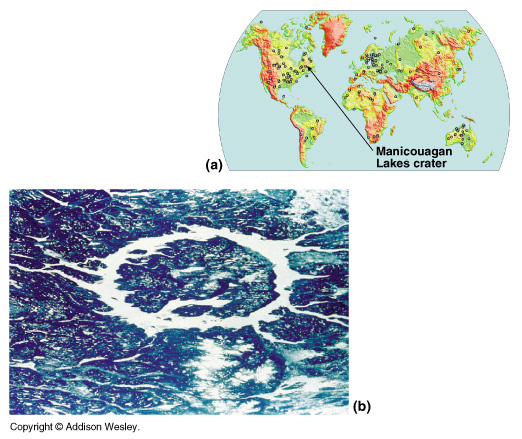
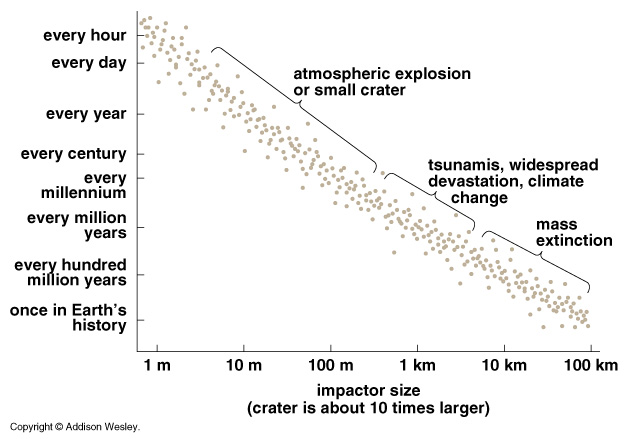
An asteroid with d = 10 km hits the Earth roughly every 30 million years. Such a collision in our time would likely be the end of human civilization. 108 - 109 megaton explosion devastates surrounding area (r = 1000 km); rest of Earth like an oven set to "broil". This is followed by impact "winter" produced by dust in the atmosphere; sunlight is blocked for many years.
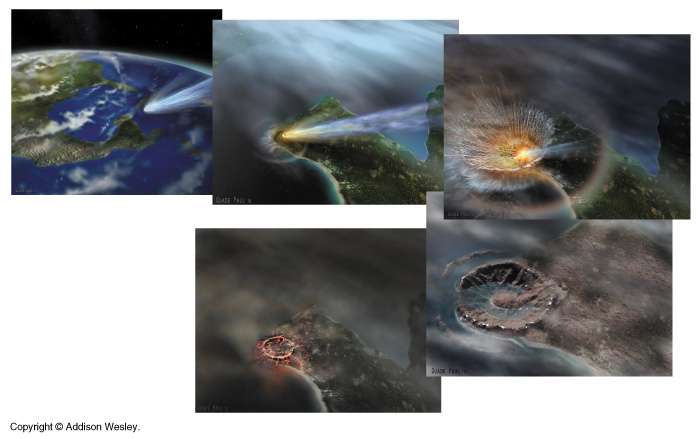
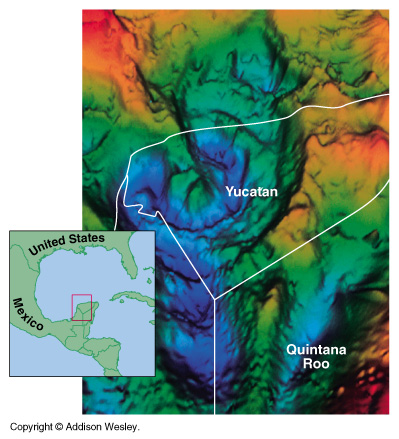 Hypothesis: The cause of the Cretacious - Tertiary extinction 65 million years ago, when the dinosaurs along with 2/3 of all other life on the planet went extinct, was caused by such a collision.
Hypothesis: The cause of the Cretacious - Tertiary extinction 65 million years ago, when the dinosaurs along with 2/3 of all other life on the planet went extinct, was caused by such a collision.
Luis Alvarez (UC Berkeley) 1979 - excellent evidence: thin iridium layer found in rock strata at t = -65 million years. Also the site of an impact crater in the Yucatan peninsula has been dated at about 65 million years old. |
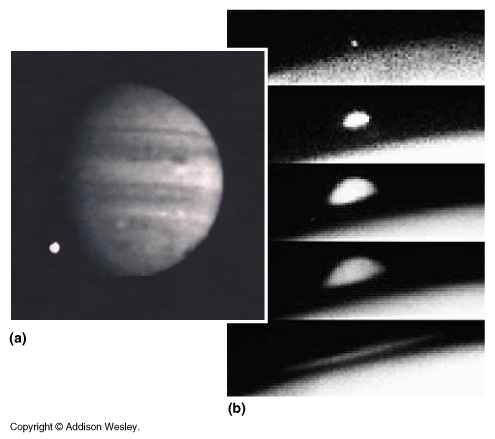

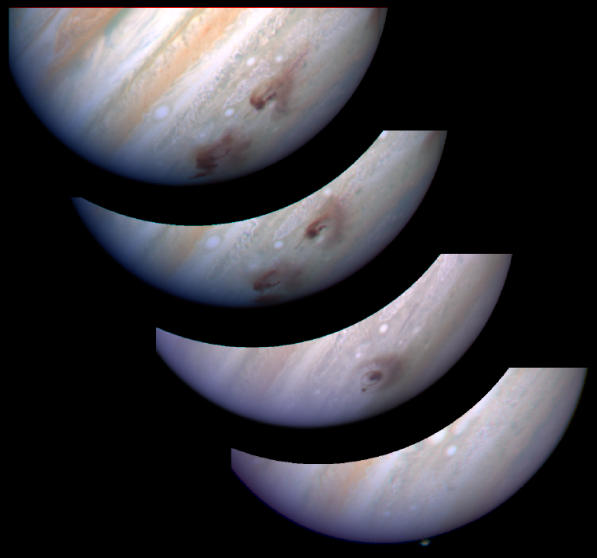
The Nebular Theory has these key features:
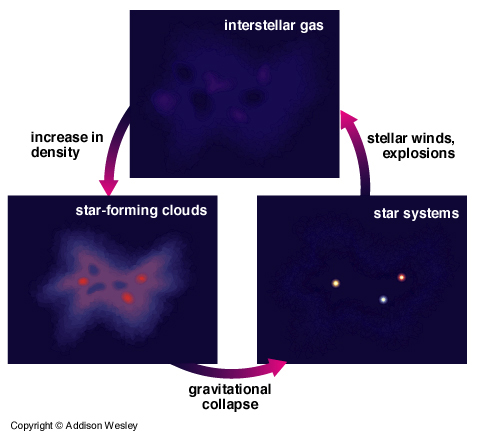
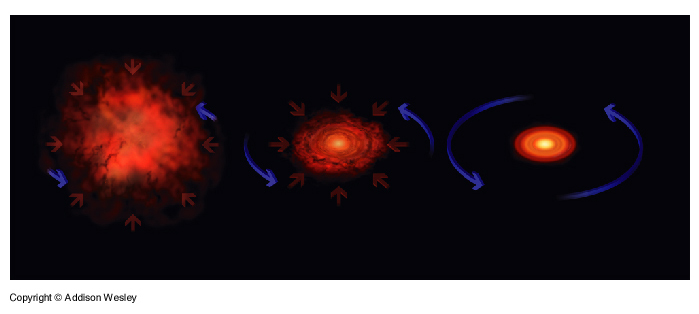

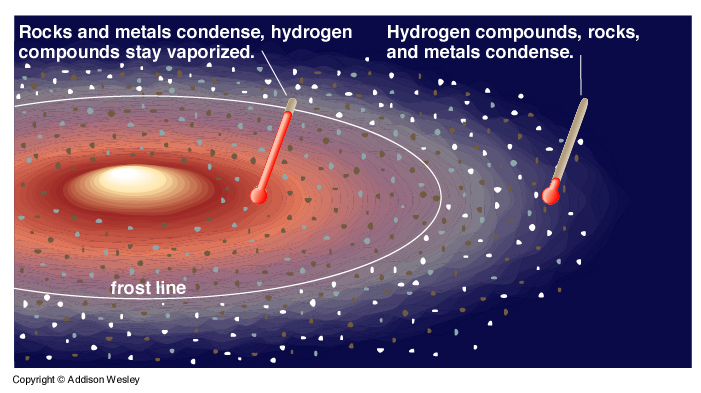

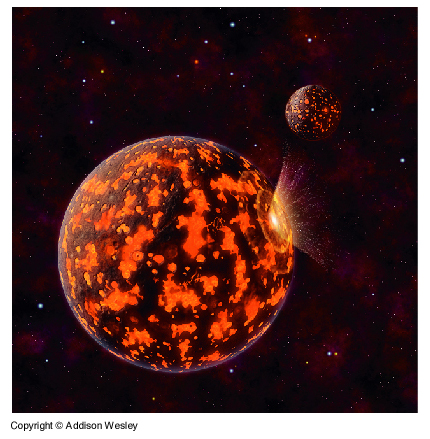
Planets around other stars are hard to find. We cannot see their reflected light (too dim and drowned out by star's light).
Until recent years this had only been a hypothesis with no data. But now we have very strong evidence that most stars, in fact, have planets around them.
Several teams of astronomers across the world have been using a similar technique to find them. One team lead by UC Berkeley's Geoff Marcy has been very successful. They have found these new worlds by their gravitational influence on their parent star.
They look for a periodic "wobble" in the motion of the star due to the gravitational tug and motion of the planet around it. The "wobble" is measured as a Doppler Shift in the light from the Star.
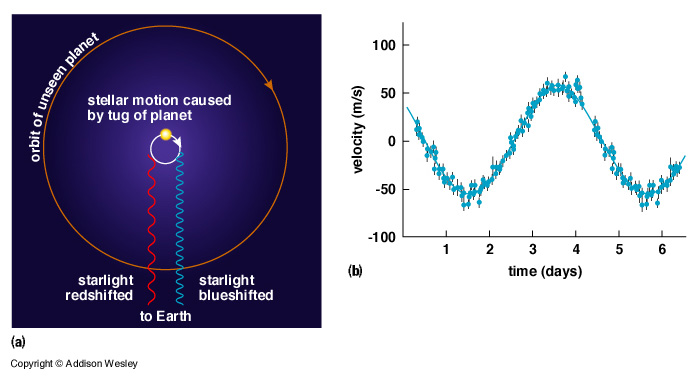
Can calculate the mass of the planet using Kepler's 3rd law.
There are now over 50 Extra-solar planets known. Most have masses similar to Saturn and Jupiter (and greater) and are very close to their parent star. This is likley a selection effect. The Doppler Shift Method is most sensitive to massive planets with short periods and eccentric orbits.
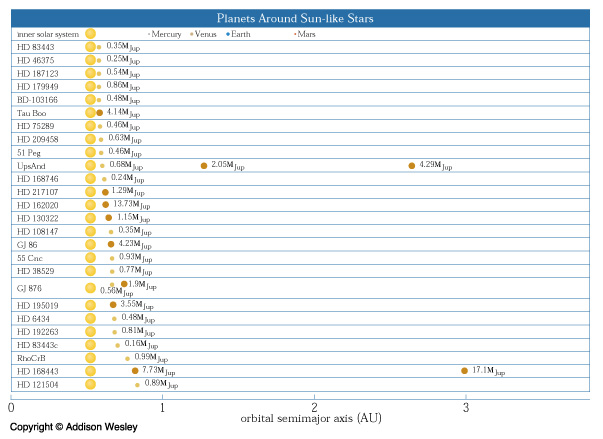
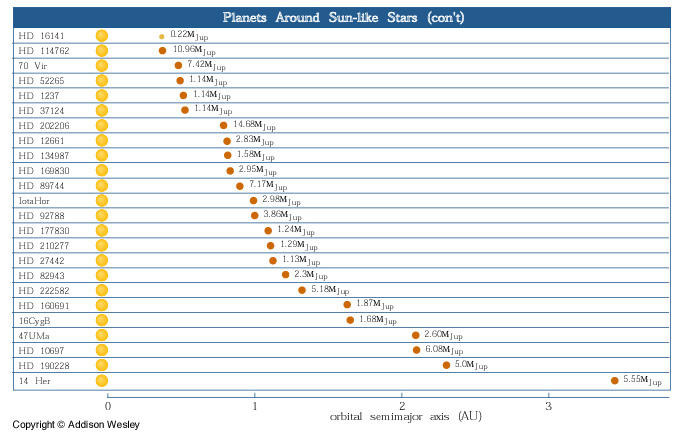
Return to Class Notes Page